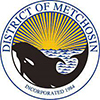Community History
History and Heritage of Metchosin
Human occupation of Metchosin lands goes back many thousands of years as evidenced by the villages sites, fortifications, middens and burial cairns of the First Nation people. The Beecher Bay Scia’new First Nation continues to be our good neighbour on the south western border of Metchosin.
The first European contact with Metchosin took place in 1790 when Spanish explorer Manuel Quimper entered Pedder Bay and was greeted by a small group of native people. Other Spaniards, Galiano and Valdes cruised the area in 1792, the same year that Capt. George Vancouver made detailed surveys of the coastline. The next visitor of note was James Douglas who looked at Metchosin in 1842 as a possible site for the Hudson Bay Company post that was soon to become Fort Victoria.
Pioneers
The Hudson Bay Company’s Puget Sound Agricultural Company established a number of farms in the Victoria area extending as far west as Colwood. Independent settlers however wanted to start their own farms. One of the first was Bilston Farm, on the shore of Witty’s Lagoon, bought by Captain Cooper in 1851 and farmed by Thomas Blinkhorn. Other pioneers, an independent lot, soon settled here, clearing and cultivating the arable land and ranging sheep and cattle over the upland slopes. Initially there was no more than a forest trail to Victoria and most supplies and produce were shipped by water. Later, travel to the city was a day’s journey by horse drawn stage and still later jitney buses were used.
Federal Government
The federal government has left its mark on Metchosin; first Albert Head and later William Head served as Dominion Quarantine Stations. A small cemetery on Bentinck Island attests to its use as a leper colony for many years. Race Rocks lighthouse was completed in 1861, one of the first lights on this coast. During the Second World War coast defence batteries were installed at Albert Head, Mary Hill and Christopher Point and Rocky Point was acquired by the DND. These lands are valued for their historic and ecological importance, as well as contributing significantly to our tax base.
Post WWII
As the population of Victoria grew after WW II residents of Metchosin could see the spread of suburban land development. It was mainly to preserve the rural character of the area that the community came together to form Municipality of the District of Metchosin in 1984, the first of the western communities to incorporate. The rural ambience of Metchosin remains intact: properties are generally large, allowing home businesses, agriculture and animal husbandry to flourish. Some of our roads are narrow and winding, there are no sidewalks and only a few streetlights. Of our wildlife, our gardens are often visited by deer at night, the occasional cougar passes by, bear and elk have been seen, and rarely, a wolf.
Metchosin’s heritage includes both the natural and agricultural landscape and significant older houses and structures in our neighbourhood. Of the landscape we have magnificent mountain views, fine beaches, active farmland and hedgerows, fine stands of old growth trees, lakes, streams, an ambitious trail system and many fine parks. Our built heritage includes original school buildings and churches, and a number of fine older homes and outbuildings.
Just as important as this natural heritage is the community spirit and a high level of volunteerism that has characterized Metchosin since its early days. The sense of neighbourliness that held the pioneers together continues to support the community. Nowadays that sense of community can be best seen at the annual Metchosin Day celebration and in the activities and services provided many volunteer organizations and services. The efforts of many individuals continue to maintain the unique ambience of Metchosin.
